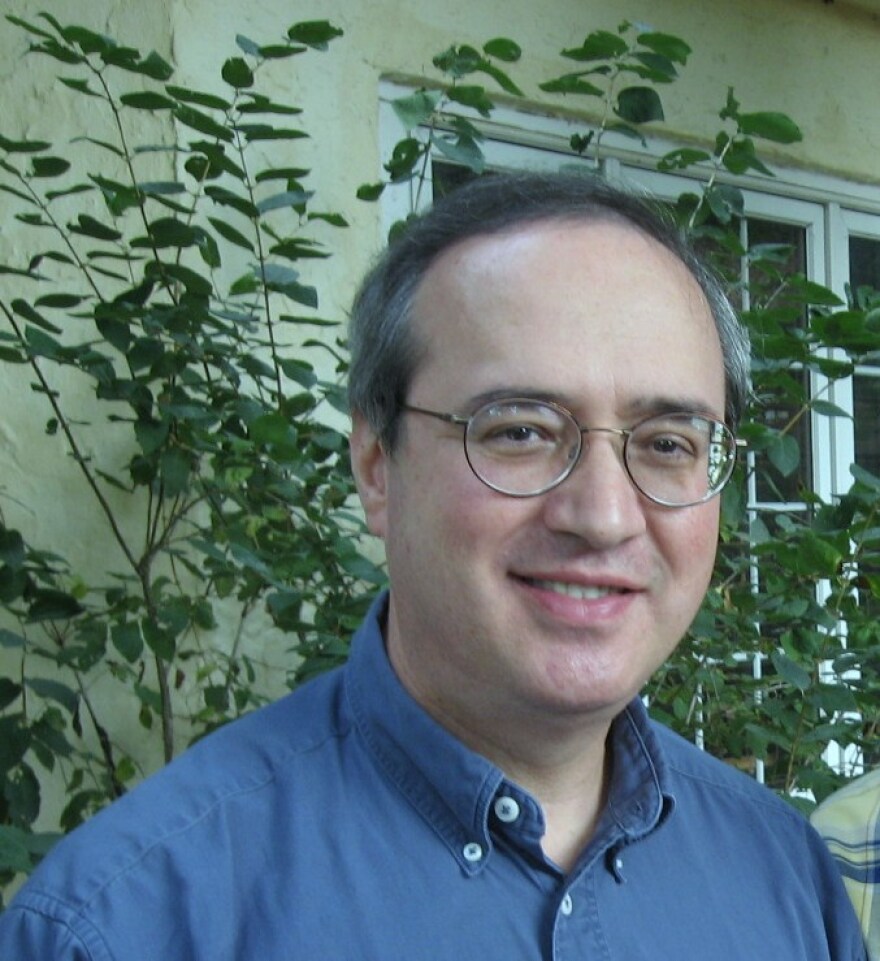Presumably, everyone knows that "To be, or not to be" is a phrase from Shakespeare's Hamlet.
Same goes for "something is rotten in the state of Denmark." And many people might correctly guess that "Get thee to a nunnery" is from Hamlet as well.
But what about "the lady doth protest too much"?
"To thine own self be true"?
"Neither a borrower nor a lender be"?
As the Heart of America Shakespeare Festival cranks up this summer's production, folks who don't know all of those familiar lines are also from Hamlet could stand some brushing up on Shakespeare's most popular and well-known play.
So once again, we consulted Geraldo U. Sousa, a professor of English at the University of Kansas, who has written several books on Shakespeare and helped us understand Twelfth Night last year.
"The beautiful language of the play alone is worth a trip to the theater," Sousa confirms.
Among his own many favorite phrases from Hamlet: "Brevity is the soul of wit," “Though this be madness, yet there is method in’t.” And less well-known, but clearly words to live by: “Those friends thou hast, and their adoption tried,/Grapple them unto they soul with hoops of steel."
Overall, Sousa describes Hamlet as a murder mystery and "a psychological drama of great intensity ... with a hero-avenger, a ghost, a delay, madness, and a play-within a play."
At least two distinct themes emerge, he says.
First, there’s the dysfunctional family.
“A brother kills a brother, not unlike the biblical Cain and Abel, and then marries his murdered brother’s widow, and seems to want to adopt Hamlet as his own son and heir,” Sousa explains.

“The play focuses on the intertwined lives of Claudius, who forges a physical, bodily, sexual, political alliance with Gertrude, his brother’s widow, and Hamlet, who forms an alliance with the spectral presence of his father, who appears to him as a ghost and commands him to avenge the foul murder but to spare Gertrude.”
While Claudius wants to enjoy all of the drinking and feasting that goes with being part of a beloved royal couple, the black-dressed Hamlet “struggles to find a way to express his inner suffering and mourning,” Sousa says.
“Hamlet becomes a stranger in his own home," Sousa notes. Meanwhile, "the lives of another family — Polonius, Laertes and Ophelia — become tragically intertwined with the fate of the royal family, leading to the accidental killing of Polonius, the madness and death of Ophelia, and the death of Laertes.”
Another theme is homecoming – or its impossibility.
Hamlet, a college student in Germany, is summoned home for his father’s funeral only to find that the home he knew no longer exists. Other homecomings — Laertes from Paris for the royal funeral and then for the funeral of his own father; Hamlet, sent to England for certain execution but managing to return to Elsinore; Hamlet’s father returns as the Ghost — reinforce the idea that it’s impossible to regain a home that has been lost, Sousa says.
“Nothing is as it seems in the castle at Elsinore,” Sousa says, adding that Shakespeare’s audiences would have recognized Kronborg Castle, in the town of Elsinore. The castle overlooked the strait between Denmark and Sweden, a frequently traveled route for English trading ships.
“In the 16th century the castle underwent modernization and renovation,” Sousa says. “King James VI of Scotland, who became James I of England upon Queen Elizabeth’s death in 1603, had visited the castle in 1589-1590, when he went to Denmark to marry his future wife, Ann.”

In Hamlet, he says, “Shakespeare takes us to public and intimate spaces of the castle: the ramparts of the watch, the throne room, the long corridors, the intimacy of the royal apartments, the banquet hall, the graveyard, and even the pond, where Ophelia drowns herself. In these spaces, Shakespeare represents an 'experiential discontinuity' between the pleasure-seeking Claudius and the mournful, sorrowful Hamlet.”
The play was probably written sometime in 1600, Sousa says.
"Its first performance dates from 1600-01, and the most famous tragic actor of the period, Richard Burbage, played Hamlet. Shakespeare himself is said to have performed the Ghost."
Playing Hamlet in Kansas City in 2017 is native son Nathan Darrow, who may feel like a ghost to anyone who has followed his performance in Netflix's House of Cards or HBO's recent Bernie Madoff movie The Wizard of Lies.
The Heart of America Shakespeare Festival presents Hamlet, June 13 through July 2 at Southmoreland Park, 4598 Oak Street, Kansas City, Missouri, 64111.
C.J. Janovy is an arts reporter for KCUR 89.3. You can find her on Twitter, @cjjanovy.





